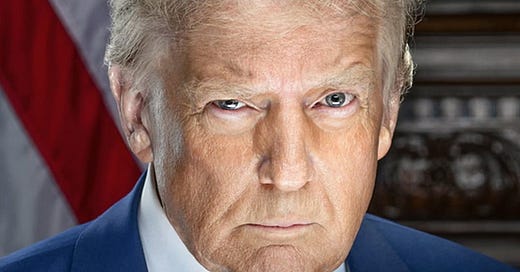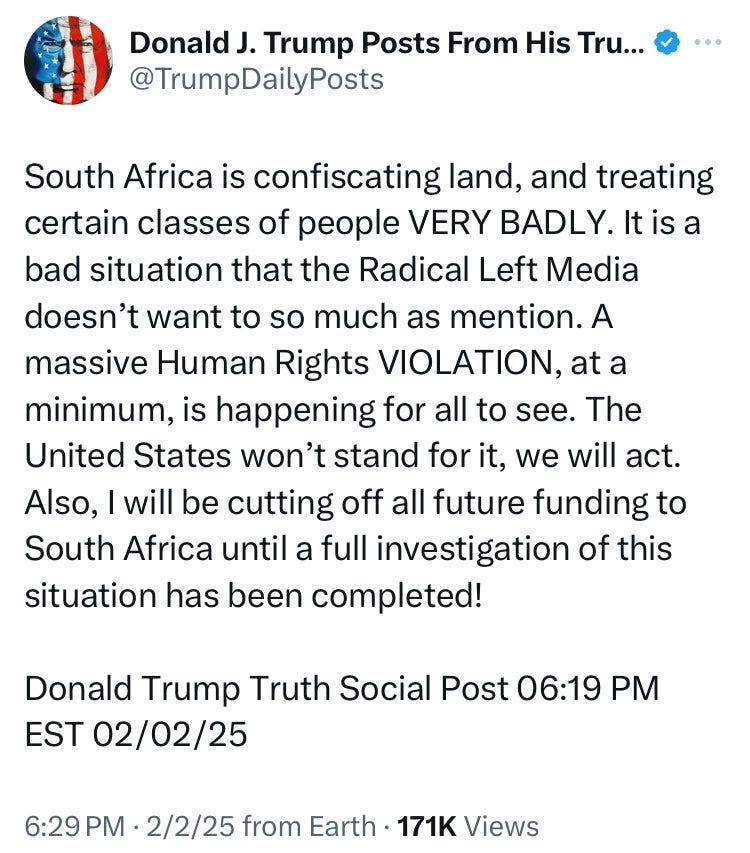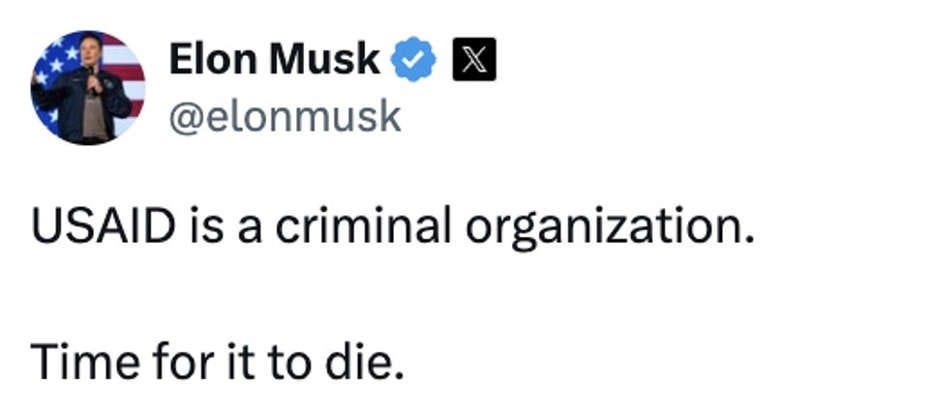President Trump claimed, without evidence, that "certain classes of people" in South Africa were being mistreated and vowed to cut off U.S. funding until the issue was investigated. In a Truth Social post, he alleged that South Africa was confiscating land and treating people "VERY BADLY," pledging that the U.S. would act and halt future financial aid.
The U.S. provided nearly $440 million in assistance to South Africa in 2023. Trump's remarks follow South African President Cyril Ramaphosa's recent signing of a law facilitating state land expropriation in the public interest. The law aims to address racial disparities in land ownership since apartheid ended in 1994.
South Africa’s foreign ministry responded by expressing confidence that Trump's advisers would better understand the country's policies. The ministry noted that similar expropriation laws exist globally. South Africa holds the G20 presidency, and the U.S. will assume the role next.
Ramaphosa previously dismissed concerns over relations with Trump, citing a past conversation after Trump’s election victory. During his first presidency, Trump called for an investigation into alleged large-scale killings of white farmers, though no findings were publicly disclosed.
Billionaire Elon Musk, a South African native and Trump ally, has also criticized South Africa’s handling of racial tensions. In 2023, Musk accused the government of allowing calls for white genocide, referencing a far-left political party’s singing of an anti-apartheid song. Musk met with Ramaphosa in September 2023 to discuss investment in South Africa.
Sources: Reuters, Associated Press
President Trump announced a one-month pause on his newly imposed 25% tariffs on Mexican imports after Mexico’s president, Claudia Sheinbaum, agreed to send 10,000 troops to the U.S.-Mexico border to combat drug trafficking. Trump stated that negotiations on the tariffs would be led by U.S. Secretaries Marco Rubio, Scott Bessent, and Howard Lutnick, along with high-level Mexican representatives.
The tariff pause follows Trump's recent imposition of a 25% tariff on Mexican and Canadian goods and a 10% tariff on Chinese imports. In response, Sheinbaum had ordered retaliatory tariffs on U.S. goods but did not disclose the rates. Canadian Prime Minister Justin Trudeau also announced a 25% tariff on $155 billion worth of U.S. goods.
U.S. stock markets, which had declined earlier, recovered following the tariff pause announcement. Trump and Sheinbaum confirmed that the deployed Mexican troops would target drug trafficking, particularly fentanyl, and help curb illegal migration to the U.S.
Sheinbaum emphasized the importance of U.S.-Mexico relations and announced that the U.S. had committed to preventing the trafficking of high-powered weapons into Mexico. Trump did not mention this commitment in his statements. In discussions with U.S. officials, Sheinbaum reaffirmed Mexico’s commitment to defending its citizens.
President Trump announced a 30-day pause on proposed 25% tariffs on Canadian goods, citing efforts by Canadian leaders to strengthen border security. The decision followed a phone conversation between Trump and Canadian Prime Minister Justin Trudeau, during which Trudeau outlined Canada’s commitment to addressing U.S. concerns over unauthorized migration and fentanyl trafficking.
The threat of immediate tariffs—which would have had widespread economic repercussions—was used as leverage to push Canada into making substantial commitments, including $1.3 billion in border security funding, the deployment of 10,000 personnel, the appointment of a "Fentanyl Czar," and the classification of drug cartels as terrorist organizations. While these measures may appear to address U.S. concerns over migration and drug trafficking, the speed at which the agreement was reached raises doubts about its long-term enforcement and effectiveness. Whether these policies will lead to tangible results or are simply concessions made under duress to avoid trade penalties remains unclear.
On his social media platform, Truth Social, Trump expressed satisfaction with the agreement: "As President, it is my responsibility to ensure the safety of ALL Americans, and I am doing just that." His administration had previously threatened the tariffs unless Canada took stronger measures to curb the flow of illegal migrants and fentanyl into the U.S.
Trump’s framing of these deals as purely border security victories overlooks the complex economic and humanitarian dimensions of immigration and drug trafficking. Without addressing root causes, such as economic instability and demand for illicit drugs within the U.S., these policies risk being superficial fixes rather than substantive solutions.
Elon Musk has officially joined the federal government as a special government employee under President Trump. This move follows Musk’s previous appointment to lead the Department of Government Efficiency, though he had not been an official federal employee until now. The special government employee designation allows him to work for the government on a temporary basis, either with or without compensation.
Musk announced his new status shortly after declaring on X (his social media platform) that he planned to shut down the U.S. Agency for International Development (USAID) by claiming it’s “…time for it to die.” Musk also stated that he had Trump’s full support for the plan. This abrupt and unilateral announcement exemplifies the troubling lack of transparency and deliberative process in the Trump administration’s policymaking. Foreign aid is a critical tool of diplomacy and humanitarian assistance, and its elimination or restructuring should involve input from policymakers, international experts, and congressional oversight—not the whims of a billionaire with no prior experience in public administration or foreign policy.
A White House official confirmed that Musk is now formally part of the administration, emphasizing that his role is directly coordinating with the president. The White House's response—that USAID will temporarily be placed under Secretary of State Marco Rubio’s control—suggests an improvised approach rather than a well-thought-out strategy.
This development represents another example of the Trump administration’s tendency to sidestep traditional governance structures in favor of personal alliances. Musk’s involvement in government decision-making—without a formal vetting process, Senate confirmation, or clear delineation of responsibilities—reflects a broader shift toward an informal and personality-driven style of governance. If Musk’s role continues to expand, it could set a dangerous precedent for future administrations, where billionaire entrepreneurs leverage personal relationships with the president to influence national and global policies without democratic accountability.
In his proclamation for American Heart Month (February 2025), President Trump acknowledges heart disease as the leading cause of death in the U.S., describing its devastating impact on families and communities. While the statement successfully highlights heart disease as a major health crisis and promotes lifestyle changes such as better diet, exercise, and smoking cessation, it fails to outline concrete policy initiatives. The proclamation makes broad claims about saving lives and lowering healthcare costs. Yet, it does not specify any government programs, funding efforts, or partnerships that would translate these promises into action.
The proclamation inexplicably includes unrelated health issues, such as autoimmune disorders, infertility, and autism. These conditions have no clear connection to cardiovascular disease, yet they are vaguely grouped as part of a broader “decades-long increase in health problems.” By making this unsupported association, the statement risks spreading misinformation and detracting from the urgent need to address heart disease specifically. Additionally, while politically popular, Trump’s critique of pharmaceutical companies is undefined. He claims his administration will “crack down on Big Pharma,” but he does not clarify whether this refers to lowering drug prices, improving transparency, or addressing unethical practices.
Overall, Trump’s proclamation draws attention to an important issue but ultimately fails to deliver actionable solutions. Instead of outlining tangible steps to combat heart disease—such as increased research funding, improved access to healthcare, or targeted public health campaigns—it relies on sweeping generalizations, misplaced political talking points, and vague promises.
President Trump's Executive Order calling for creating a United States Sovereign Wealth Fund (SWF) raises several important economic and strategic questions. While numerous countries and 23 U.S. states have successfully implemented sovereign wealth funds, the feasibility and necessity of a federal SWF remain debatable. The order directs the Treasury and Commerce Secretary to deliver a plan within 90 days. Still, it lacks critical details about how such a fund would be structured, governed, and funded without disrupting existing financial obligations.
One major concern is the source of capital for the fund. The federal government holds $5.7 trillion in direct assets and an even larger sum in natural resource reserves, but monetizing these assets could prove controversial and complex. If the government intends to divert revenue from public resources or sell federal assets, it could provoke significant opposition, especially from environmental groups and fiscal conservatives wary of expanding government investment programs. Additionally, the concept of a sovereign wealth fund contradicts some core principles of free-market conservatism, raising questions about whether such state-directed investment is appropriate for the U.S. economy.
The fund's stated goals—reducing tax burdens, fostering economic growth, and strengthening U.S. global financial leadership—are ambitious but vague. Unlike nations such as Norway and Saudi Arabia, which use surplus wealth from oil revenues to fund their SWFs, the United States does not have a clear excess revenue stream to support such an initiative. Without a defined funding mechanism, the proposal risks being another federal project that fails to materialize or results in unintended economic consequences.
Furthermore, the 90-day timeline for delivering a comprehensive plan seems overly optimistic, given the complexities of structuring a SWF that aligns with U.S. economic and political realities. The proposal also lacks discussion on oversight and governance. Without strict regulatory safeguards, a government-controlled investment fund could become a target for political influence, inefficiencies, or mismanagement.
President Trump proclaimed February 2025 as Career and Technical Education Month, emphasizing the importance of vocational training and workforce development. He praised hardworking Americans as the nation's backbone and highlighted his administration’s commitment to equipping students and workers with skills needed for success in a rapidly advancing technological landscape.
A key strength of the proclamation is its acknowledgment of the evolving job market and the necessity for Americans to adapt to emerging technologies. Investing in career and technical education (CTE) is undoubtedly a valuable initiative, particularly in industries with skilled labor shortages. The reference to the Strengthening Career and Technical Education for the 21st Century Act is a concrete example of policy action taken during Trump’s first term, demonstrating a real commitment to expanding vocational opportunities.
However, the proclamation lacks specific details on how the administration intends to advance CTE in the coming years beyond broad promises to "invest in the next generation" and "unleash the enormous potential of the American people." While these aspirations are laudable, they remain vague and fail to outline concrete funding strategies, partnerships with industries, or new legislative measures that would ensure meaningful advancements in technical education.
The proclamation presents a somewhat simplistic view of economic growth and workforce development. While Trump asserts that his policies led to "unparalleled growth and economic development," the reality is more nuanced. Multiple factors, including tax cuts, deregulation, and global market trends influenced economic expansion during his first term. The proclamation does not acknowledge the setbacks caused by the COVID-19 pandemic or the challenges posed by automation and globalization—factors that continue to shape the workforce landscape.
Moreover, while the statement rightly highlights the importance of CTE as an alternative to traditional higher education, it fails to address how vocational programs will be integrated into the broader education system.
The U.S. Department of Justice (DOJ) argued that a federal court’s order blocking President Trump’s federal funding freeze does not completely halt the administration’s actions.
The controversy began when the White House Office of Management and Budget (OMB) issued a memo directing federal agencies to pause grants and loans. This led to lawsuits, including one from 22 Democratic states and Washington, D.C., prompting a federal judge in Rhode Island to block the directive. Just before a court hearing, the OMB rescinded the memo, but White House Press Secretary Karoline Leavitt insisted on social media that the funding freeze was still in effect.
The court later issued a temporary restraining order preventing the administration from pausing or canceling federal financial assistance. It also prohibited the White House from rebranding or implementing the freeze in another format.
In response, the DOJ contended that the court’s order only applied to the OMB memo and did not limit the president’s ability to communicate spending priorities to agencies. The DOJ also argued that the ruling contained ambiguous language and could interfere with executive authority. They requested clarification from the court and suggested that the order did not bind non-defendant federal agencies.
U.S. Homeland Security Secretary Kristi Noem has moved to revoke Temporary Protected Status (TPS) for approximately 348,000 Venezuelans in the U.S., effective in April, as part of President Donald Trump's intensified immigration crackdown. The decision follows Trump's broader efforts to restrict humanitarian programs and aligns with his push to limit temporary protection enrollments, a policy previously blocked by courts during his first term.
The move reverses an 18-month TPS extension granted under former President Joe Biden, who significantly expanded the program to over 1 million individuals from 17 nations. The Department of Homeland Security justified the decision by citing "notable improvements" in Venezuela's economy, public health, and crime, though conditions remain dire for many.
Many Venezuelan migrants, including pregnant women and families, fear deportation, as returning to Venezuela remains a dangerous prospect. Deportations have been difficult in the past due to strained U.S.-Venezuela relations, but Trump recently announced that Venezuela has agreed to accept deportees.
Additionally, the Trump administration is reportedly preparing to terminate a Biden-era program allowing over 530,000 Cubans, Haitians, Nicaraguans, and Venezuelans with U.S. sponsors to legally live and work in the U.S. This policy shift has sparked fear and uncertainty among Venezuelan migrants, with reports of U.S. Immigration and Customs Enforcement (ICE) arrests further intensifying anxiety in the community.





